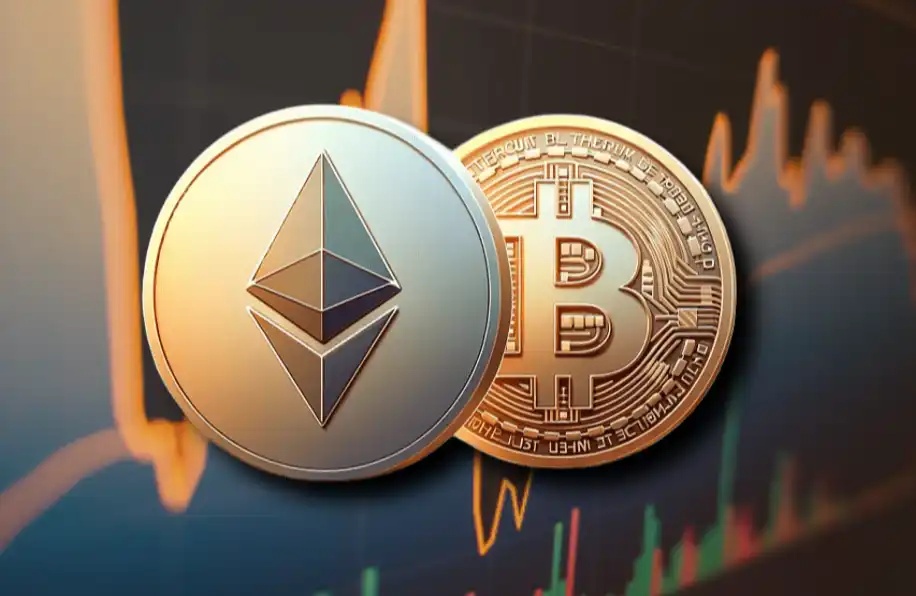Sidekick: Building the LiveFi Infrastructure for Real-Time Transactions
Source: Animoca
TL;DR
· Sidekick is a Web3-native live streaming platform that combines TikTok-style content flow, Huya-style monetization mechanisms, and on-chain execution capability. During live streams, users can tip and participate in airdrops, making content creators real-time distributors of assets.
· As the crypto attention economy becomes more saturated, the effectiveness of marketing tweets and leaderboard campaigns is diminishing. In contrast, live streaming is a more trusted and conversion-friendly form of communication, suitable for building visibility and credibility for meme tokens and VC-backed projects.
· The platform has achieved initial success in the Asian market, attracting over 1000 KOLs dedicated to the live streaming field. Sidekick plans to expand into other content areas and incentivize deeper community engagement.
· Most team members come from Web2 backgrounds, with rich experience in live streaming platforms and global market expansion capabilities. Sidekick has entered the seventh season of the BNB Chain's MVB Accelerator, with support from YZi Labs, Altos Ventures, Fenbushi Capital, and Hashkey Capital. They have also partnered with the Solana Foundation, Base, and OKX Wallet, and joined the Google Cloud Web3 Startup Program.
· Looking ahead, Sidekick has the potential to evolve from a live streaming platform into a modular infrastructure layer, driving diverse on-chain activities through real-time content and becoming a core component of project operations.
Why Live Streaming is Crucial for Web3 Promotion
Sidekick is a Web3 content platform built around live streaming content, covering market commentary, play-to-earn games, and more. It applies the "live streaming e-commerce" model to the crypto market, creating LiveFi infrastructure where KOLs, traders, and project teams interact in the same space.
The rise of Web3 live streaming is not accidental but a manifestation of a structural issue in the crypto ecosystem: inefficient marketing and an increasingly saturated attention market.

Starting from Q1 2024, with the emergence of tools and platforms such as Pump.fun, BONK's LetsBonk, and Raydium Launchpad, the barrier to token issuance has significantly decreased. AI-driven smart tokens have further accelerated this trend. The token issuance has grown by over 50 times since Q1 2024, while the active wallets on mainstream Layer1 chains have doubled. However, the token exposure mechanism has not expanded synchronously, leading to early-stage projects struggling to gain attention.

On an institutional level, from Q1 2024 to Q1 2025, VC investment amount has continued to grow, but funds are increasingly concentrated in a few star projects. These projects, due to valuation and liquidity pressures, also demand higher levels of market attention.
In this context, "distribution efficiency" and "information dissemination" have become even more crucial. Projects not only need to create products but also need to win the game of attention. As Sidekick founder Jonny mentioned, the criteria for evaluating token projects have shifted from fundamentals to their early ability to attract attention.
Among all options, Key Opinion Leaders (KOLs) are a key force in sparking project attention. While marketing agencies can help identify top-tier KOLs, the cost is high, and the coverage is limited. A new issue arises: how can projects reach and activate mid-tier KOLs to improve the marketing ROI?
Many InfoFi platforms have addressed this issue by introducing a ranking-style airdrop mechanism—projects distribute airdrops based on the spread popularity on Twitter/X. This has indeed brought about wider participation and incentivized mid-tier KOLs to produce content. However, this mechanism also has side effects: KOLs tend to post uniformly formatted, similar content, leading to content homogenization, user fatigue, and impacting promotional effectiveness.
Therefore, the issue evolves into: how can projects, especially early-stage projects, stand out in the sea of information, quickly build trust, and continue to deliver differentiated content?
Live streaming, in the context of Web3 promotion, showcases multiple structural advantages. Compared to static tweets or prerecorded videos, live streaming allows content creators to engage in real-time, unscripted interaction with viewers. This dynamic communication mechanism enhances transparency, enabling viewers to evaluate not only the content but also observe the presenter's behavior, intent, and credibility. These features are also one of the reasons behind the rise of live stream e-commerce in Web2. In 2023, China's live stream e-commerce GMV had already exceeded 49 trillion RMB, and a similar model is gradually gaining popularity in the European and American markets.
Web3 itself is severely information-asymmetric and has a high cost of trust. Therefore, live streaming happens to be a means to reduce uncertainty and establish trust.
The age distribution of crypto users also supports this form of adoption. Globally, about 60% of crypto users are aged between 25 and 44, which is also the core user group of Twitch, accounting for nearly 50%. This indicates that crypto users have a high degree of cultural and behavioral adaptability to live streaming.
The industry trend of adopting this functionality is already underway: in 2024, Pump.fun integrated live streaming, allowing creators to introduce tokens in real time. The "Crypto" category on Twitch has also attracted over 4,600 daily viewers, already on par with mainstream categories like NBA 2K25 and Call of Duty.
In addition to structural advantages, the attention distribution path of live streaming also aligns with real user behavior. The Sidekick team observed a typical five-step discovery path:
1. Someone shares the token contract address in a Telegram/Discord group;
2. Discussion within a private group;
3. KOLs on platforms recommend it to their fans;
4. Receives broader attention on Platform X;
5. Eventually translates into trading volume.
This demonstrates that the dissemination path of a project relies on trusted individuals telling stories, validating legitimacy, and establishing early trust. Live streaming, as a real-time form of human interaction, is an ideal tool to accelerate this process.
Sidekick: From Attention to Action
Sidekick is a live streaming-centered crypto market discovery platform, focusing on real-time market analysis and project interaction. It responds to the profound changes in Web3 user behavior: scarcity of attention, rapid narrative turnover, and trust becoming key to user adoption of projects.
By deeply integrating live streaming with a trading module, Sidekick achieves real-time interaction between project teams, content creators, and viewers. It brings the logic of live streaming e-commerce into the LiveFi scene, truly integrating storytelling and community engagement.
Platform Features

The "Trust-Action" loop built by Sidekick originates from its product design: it not only incorporates the interaction mechanisms of Web2 platforms but also has the transaction capability of Web3. It combines the core functions of TikTok, Huya, and Bilibili:
The creator generates content in real time, and the audience can support them through tipping, gifting, advertising, or even subscribing, allowing for a highly interactive and monetizable content ecosystem.

Business Model
Sidekick provides two main revenue streams for livestreamers: first, audiences can tip through virtual gifts, and second, the platform offers a creator incentive program.
Regular users play another key role on the platform. They watch live streams, receive market insights, participate in real-time comments, and can earn rewards through platform-based airdrop events.
The third component is project teams or advertisers. They increase exposure and community engagement through live AMAs, airdrop events, or product placements. They can also collaborate with livestreamers to produce content, viewing livestreamers as performance-based marketing channels.
As an infrastructure and matchmaking platform, Sidekick takes commission revenue from partner projects, similar to a brokerage service fee.
Team Introduction
Sidekick is led by founder Jonny, who has rich experience in gaming, livestreaming, and investments. He began his career at China's largest internet cafe brand, Wanyoo Internet Cafe, where he was in charge of its European market expansion. He later founded the gaming companion platform Bixin, gaining deep insights into player behavior and the livestreaming ecosystem.
Under Jonny's leadership, Sidekick was selected for the 7th season of the BNB Chain MVB Accelerator and received support from investment institutions such as YZi Labs, Altos Ventures, Fenbushi Capital, and Hashkey Capital. Additionally, Sidekick has partnered with the Solana Foundation, Base, and OKX Wallet, and successfully joined the Google Cloud Web3 Startup Program.
Market Strategy
Sidekick's market expansion strategy is divided into three stages, each corresponding to different user groups and content structures:
Stage One: Targeting crypto-native users, especially those active in Chinese communities within private groups but with limited representation on open platforms like Twitter/X. This stage focuses on building a loyal user base.
Phase 2: Expansion to General Entertainment Creators. These individuals may not be professional gamers, but excel at enhancing the live streaming experience through humor, storytelling, or emotional engagement, increasing user stickiness and platform retention.
Phase 3: Entry into more vertical content fields. Sidekick does not intend to directly compete with gaming live streaming giants such as YouTube, Huya, or Douyu, which have significant advantages in IP licensing and esports resources. Instead, Sidekick chooses to enter the niche track of "real-time encrypted market content," forming a differentiation advantage and having greater flexibility to explore new content, new creators, and new monetization methods.
This three-stage path is based on community-driven growth. Many users voluntarily change their Sidekick-style avatars, spontaneously create tutorial content, and the platform does not provide direct incentives. This grassroots growth approach has brought about a strong sense of engagement and loyalty in a positive feedback loop.
The team itself is also deeply involved in the crypto community, regularly participating in meme coin trading, KOL exchange groups, continuously obtaining first-hand feedback, and grasping the changes in attention flow and narrative trends.
Competitive Landscape
As the integration of live streaming and the crypto market interpretation becomes increasingly close, various product paths of the so-called "LiveFi" track are emerging. These products can be roughly divided into several categories: third-party live streaming platforms for Twitter/X, token issuance platforms with optional live streaming features (such as Pump.fun), live streaming models integrated with gaming (such as Abstract Chain), and exchange-native live streaming interfaces (such as the product being developed by Binance).
These paths reflect different platforms' understanding of "what role live streaming plays in the crypto ecosystem":
· Twitter/X's third-party tools were the first to implement live streaming functionality but lack Web3 native features, such as tipping with cryptocurrency;
· Pump.fun's live streaming feature focuses on how meme coin issuance can create viral liquidity through live streaming. Live streaming is more of a means of complementary communication;
· Abstract Chain focuses on GameFi projects, mainly targeting Western creators and users.
From a fundamental logic perspective, most platforms still view video content as a "promotional layer" or "additional feature." In contrast, Sidekick positions live streaming as the core interface of transactions, not a supporting role but the main axis of the product. It integrates content creation, token trading, and community interaction, embedding native monetization tools such as tipping and airdrop incentives, allowing the behaviors of content creators and viewers to naturally revolve around on-chain interaction.
Meanwhile, exchanges like Binance are also deploying live streaming features, but these live streams only serve already listed tokens. On the other hand, Sidekick's creators can freely host live streams about any asset—whether it's a newly launched project or an extremely niche narrative token. This gives Sidekick greater trend adaptability, allowing it to more keenly capture community-driven trends and speculative cycles.
A recent case in point is a streamer who showcased the entire process of hyping a meme token and achieved community takeover (CTO) in the process. Viewers were not only able to see his actions in real time but also directly participate in discussions and interactions. This live streaming format imbues the content itself with transparency and participatory elements.
In terms of geographical coverage, Sidekick has already established a strong presence among Chinese creators and audiences, having signed up over 1,000 key opinion leaders (KOLs) dedicated to the live streaming field. This dual advantage of "broad content supply + deep creator engagement" will play a crucial role in the intense battle for attention.
Conclusion: The Next Step for LiveFi through Protocol Integration
As the market continues to evolve, Sidekick is gradually transforming from a content platform to an infrastructure layer with Web3 capabilities. It is no longer just an information dissemination tool but also a real-time discovery engine—closely integrating content delivery with user actions. In this process, Sidekick is evolving from just a "content layer" to an "execution layer" with conversion capabilities, able to translate viewing behavior into on-chain operations.
In the future, Sidekick has the potential to expand into more on-chain scenarios, such as asset issuance, IDO participation, whitelist subscriptions, and even lending activities. The platform will also continue to introduce modular components to serve more protocols and application projects.
Just as live streaming completely transformed the e-commerce landscape, Sidekick aims to catalyze similarly profound changes in the Web3 ecosystem.
This article is contributed content and does not represent the views of BlockBeats
Welcome to join the official BlockBeats community:
Telegram Subscription Group: https://t.me/theblockbeats
Telegram Discussion Group: https://t.me/BlockBeats_App
Official Twitter Account: https://twitter.com/BlockBeatsAsia
 Forum
Forum OPRR
OPRR Finance
Finance
 Specials
Specials
 On-chain Eco
On-chain Eco
 Entry
Entry
 Podcasts
Podcasts
 Activities
Activities







